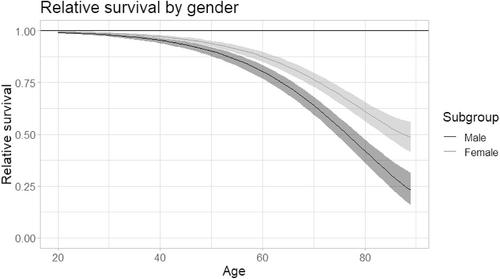Life years lost for users of specialized mental healthcare
Abstract
Background
Mental disorders are burdensome and are associated with increased mortality. Mortality has been researched for various mental disorders, especially in countries with national registries, including the Nordic countries. Yet, knowledge gaps exist around national differences, while also relatively less studies compare mortality of those seeking help for mental disorders in specialized mental healthcare (SMH) by diagnosis. Additional insight into such mortality distributions for SMH users would be beneficial for both policy and research purposes. We aim to describe and compare the mortality in a population of SMH users with the mortality of the general population. Additionally, we aim to investigate mortality differences between sexes and major diagnosis categories: anxiety, depression, schizophrenia spectrum and other psychotic disorders, and bipolar disorder.
Methods
Mortality and basic demographics were available for a population of N = 10,914 SMH users in the north of The Netherlands from 2010 until 2017. To estimate mortality over the adult lifespan, parametric Gompertz distributions were fitted on observed mortality using interval regression. Life years lost were computed by calculating the difference between integrals of the survival functions for the general population and the study sample, thus correcting for age. Survival for the general population was obtained from Statistics Netherlands (CBS).
Results
SMH users were estimated to lose 9.5 life years (95% CI: 9.4–9.6). Every major diagnosis category was associated with a significant loss of life years, ranging from 7.2 (95% CI: 6.4–7.9) years for anxiety patients to 11.7 (95% CI: 11.0–12.5) years for bipolar disorder patients. Significant differences in mortality were observed between male SMH users and female SMH users, with men losing relatively more life years: 11.0 (95% CI: 10.9–11.2) versus 8.3 (95% CI: 8.2–8.4) respectively. This difference was also observed between sexes within every diagnosis, although the difference was insignificant for bipolar disorder.
Conclusion
There were significant differences in mortality between SMH users and the general population. Substantial differences were observed between sexes and between diagnoses. Additional attention is required, and possibly specific interventions are needed to reduce the amount of life years lost by SMH users.


 求助内容:
求助内容: 应助结果提醒方式:
应助结果提醒方式:


